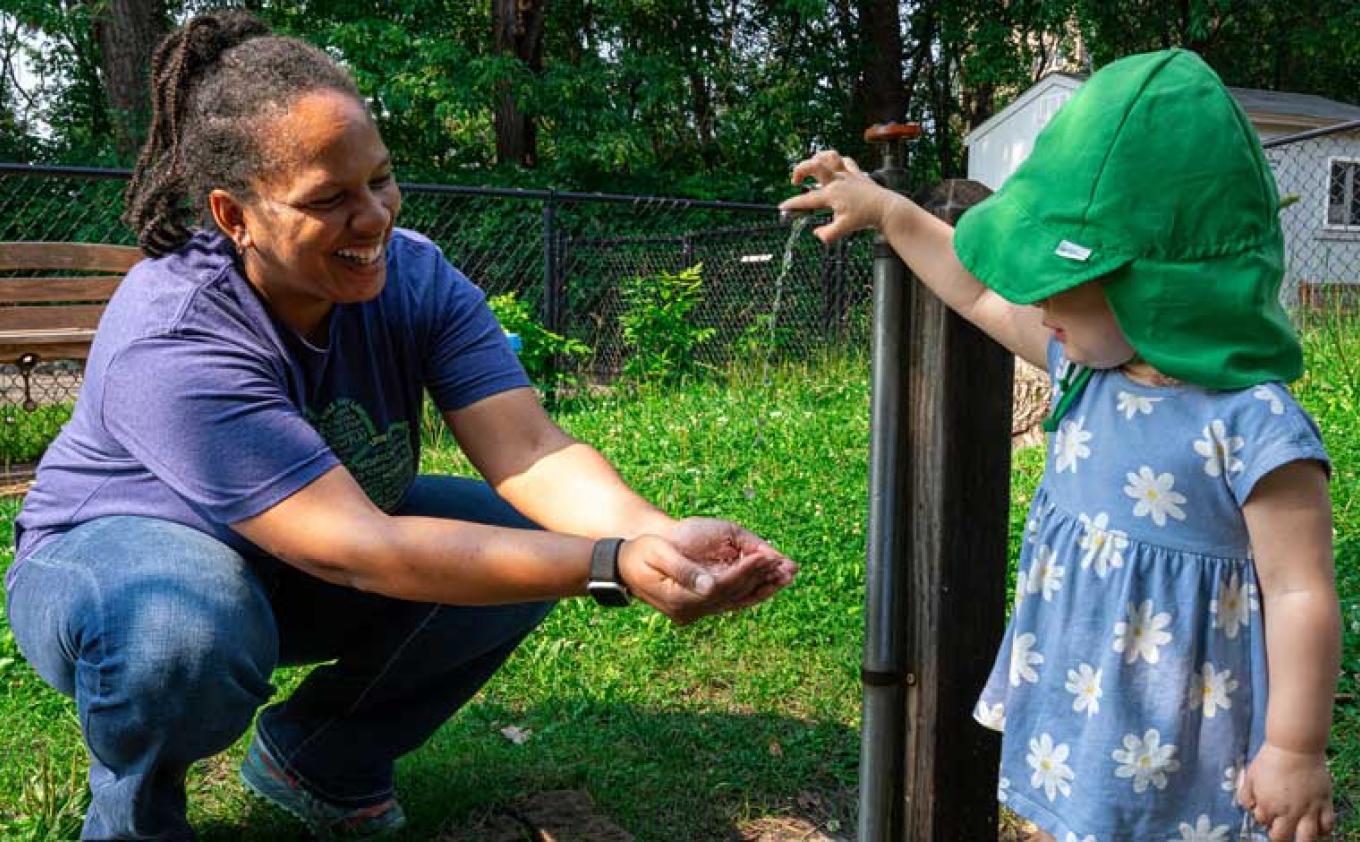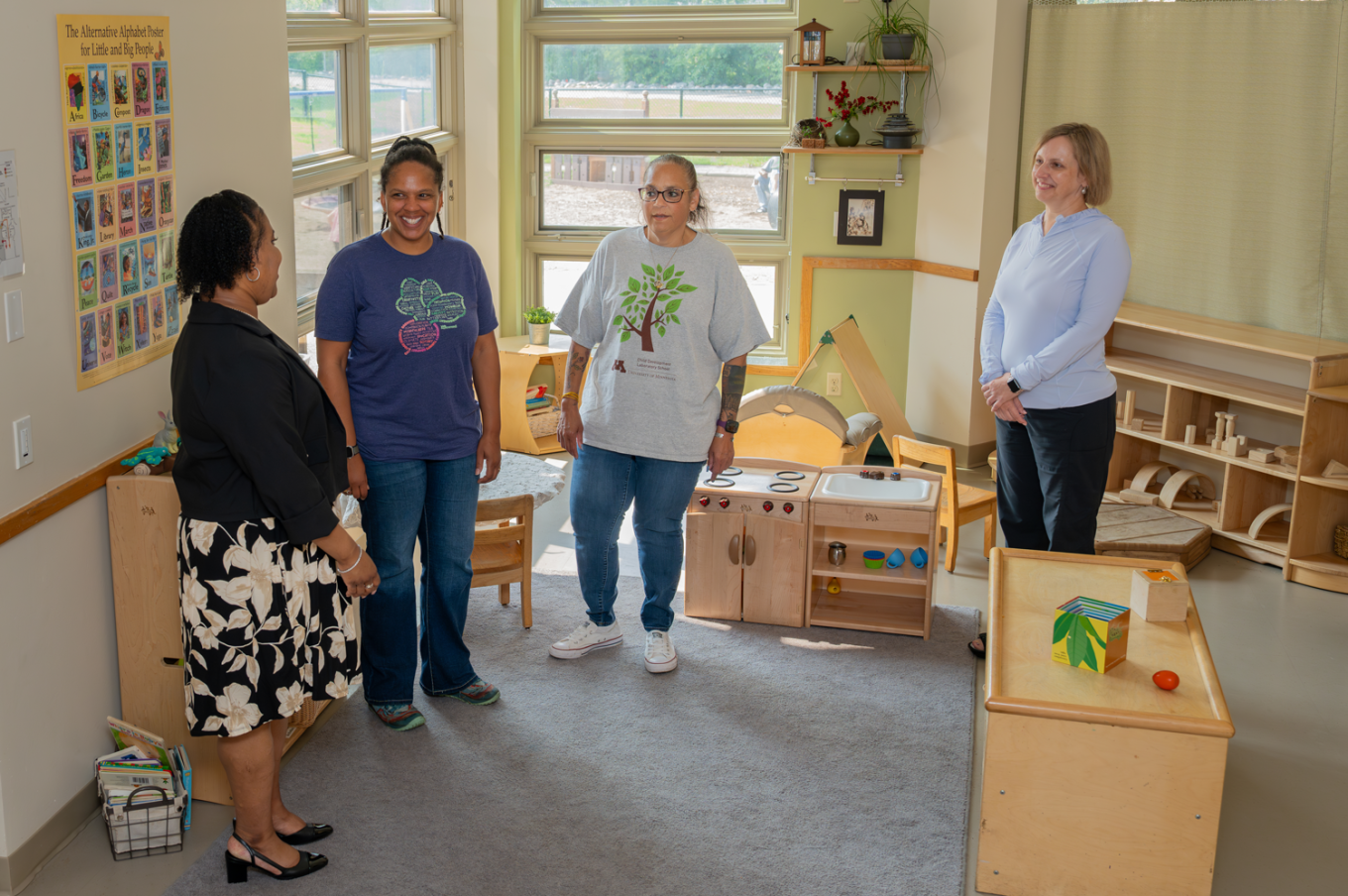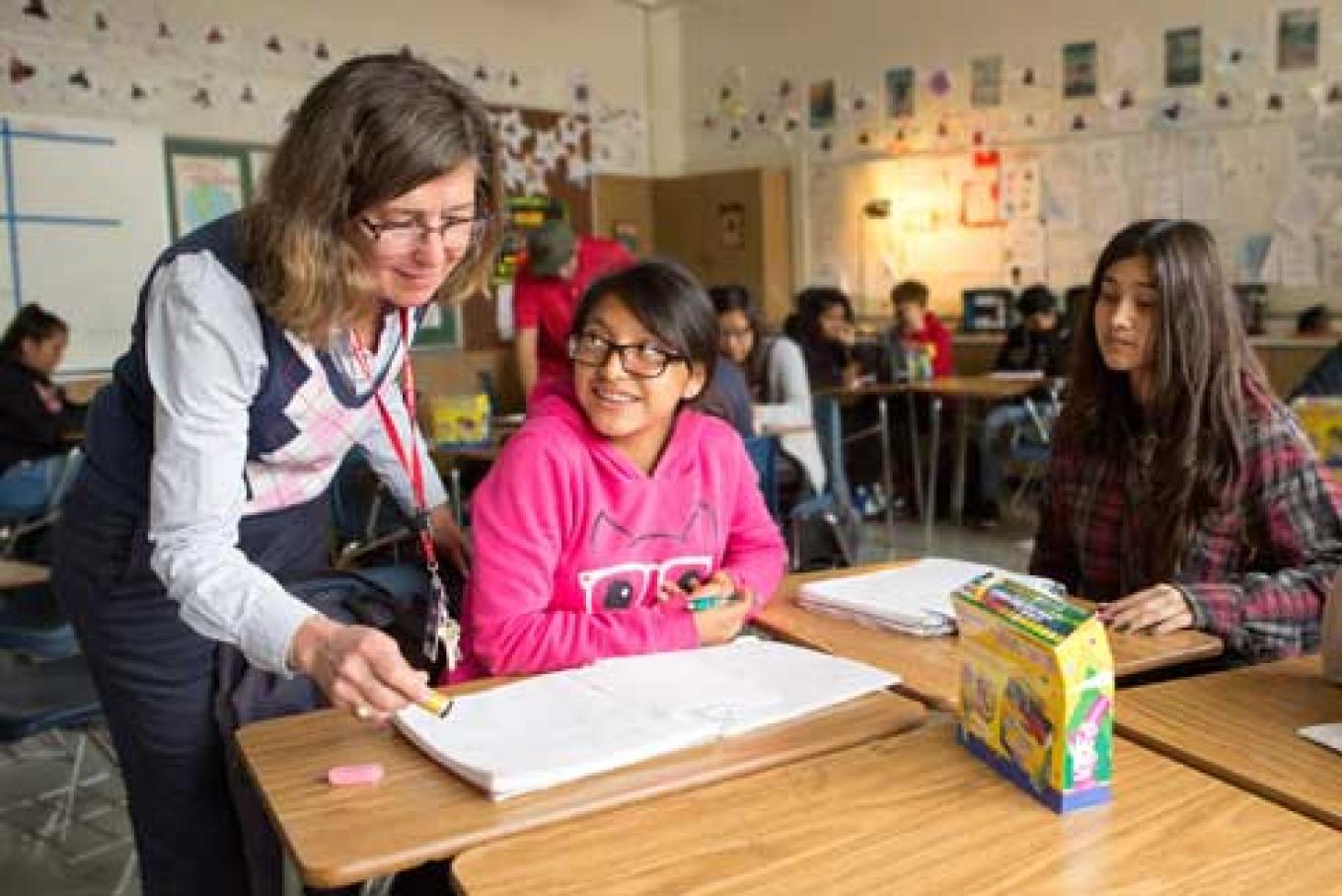2024 Fall

Capturing the complexity of early learning
Center for Early Education and Development leads effort to update Minnesota’s learning guidelines for young children
Every state has its own early learning guidelines for preschoolers and most have early learning guidelines for infants and toddlers. In Minnesota, these guidelines are called the Early Childhood Indicators of Progress (ECIPs). The Minnesota Department of Education (MDE) oversees the ECIPs, which describe what children should know and be able to do before they start kindergarten.
Early childhood education programs use the ECIPs to shape curriculum. Specialists like speech-language pathologists may also refer to them when coming up with plans for the children with whom they work. Sheila Williams Ridge, EdD, director of the Child Development Laboratory School (CDLS) in CEHD, says that many early childhood educators—including those at CDLS—refer to the ECIPs every day. Students in the Institute of Child Development (ICD)’s MEd program in early childhood education have the opportunity to student teach at CDLS, which offers full-day and part-day early childhood education programs.
“We use the ECIPs as a teaching tool not only with the children in our care, but with our student teachers and families, too,” says Williams Ridge. She teaches a course on nature-based learning in which one of the assignments is to create a set of lesson plans that demonstrate how to meet each of the ECIPs standards—outdoors. CDLS uses an app called StoryPark that allows educators to communicate with families throughout the day, and Williams Ridge is such a fan of the ECIPs that she asked StoryPark to build them into the app.
“That means that any early childhood program that uses StoryPark can access the ECIPs, even internationally,” she says.
Originally drafted in 2000, the ECIPs were revised in 2017. Last year, MDE tasked ICD’s Center for Early Education and Development (CEED) with a new revision of the ECIPs.

An example of information that CDLS teachers shared with families, indicating the learning standards addressed with a particular activity. (Photos courtesy of Child Development Laboratory School)

“The ECIPs have not been revised since 2017, so we wanted to ensure that the standards continued to reflect the most current research in early childhood development,” explains Kate Dole, education specialist with MDE’s early childhood special education team. “Several domains of the K-12 academic standards have also been revised since 2017, and it is important that the ECIPs demonstrate alignment with the most up-to-date kindergarten standards.”
CEED’s Emily Beckstrom, relationship-based professional development specialist; Ashley Bonsen, project specialist; and Anna Landes Benz, curriculum specialist, teamed up to lead the ECIPs project. They began with a public comment survey, then broadcast a call for applications to eight work groups (one for each domain). They received nearly 200 applications in 10 days.
The work groups brought together geographically and racially diverse experts from a wide range of fields. There were teachers and staff from public schools and Head Start, parents, and center-based and family child care providers. There were college faculty and MDE personnel. There were occupational and speech-language therapists, experts on special education, and people from the Deaf and hard-of-hearing community.
CEED brought on Rebecca Nathan, BA ’01, MA ’05, owner of Aviellah Curriculum and Consulting, to help make sure that diversity, equity, inclusion, and accessibility (DEIA) remained a central focus throughout the revision process. The goal was to ensure that the revised ECIPs serve children from all of Minnesota’s communities equally.
CEED facilitated virtual work group meetings with each group following the same process. They began by agreeing to maintain a DEIA lens on their work. Next they evaluated the current ECIPs language. They studied research summaries that were created for each domain by Frederique Corcoran, a doctoral student in ICD. Corcoran organized the latest evidence on child development, including research on the impact of recent societal changes such as the COVID-19 pandemic and the expanded use of technology. Finally, the work groups proposed changes and developed consensus around new drafts.
Most participants had five years’ experience or more in their field. Some work group members had even been part of the 2017 revision of the ECIPs. Participants brought their knowledge and experience to the process, as well as strong opinions that sometimes gave rise to healthy debate.
“Some groups were very much on the same page from the beginning,” says Landes Benz. “For others, the complexity of the domain created more room for passionate discussion.”

Early childhood educators and administrators like those at CEHD’s Child Development Laboratory School align their curriculum with the ECIPs. (Photo by Jairus Davis)

A central challenge of crafting meaningful early childhood standards is to convey the spectrum of what is typical as children grow. The ECIPs categorize skills into age bands, describing what children can do aged zero to one, one to two, two to three, and so on. This can be surprisingly nuanced.
“A particular skill might be observable by age two, but then again, it might not,” Bonsen explains. “Also, what is typical for children from one cultural background might not be typical for children from a different background, and that variability is important. How do we capture that variability in this document?”
Another challenge was categorizing skills and abilities into the eight domains.
“For example, writing letters or numbers shows up in fine motor development. It should also show up under literacy, art, and math,” Bonsen continues. “How do we demonstrate that when you’re working on a coloring activity, it’s not just coloring? By the way, all these domains of development are linked! If the ECIPs show this, we can help those new to the early childhood field understand that there is a lot of fuel for learning in play. Play is not just free time.”
Great care was taken in drafting the new ECIPs to use an easy-to-understand writing style and inclusive language. As one example, the new ECIPs avoid references to “kindergarten readiness.”
“Child development is very complex and affected and influenced by an infinite number of factors,” says Jon Vaupel, P3 comprehensive assessment system coordinator at MDE. “Shifting away from ‘readiness’ language and instead focusing on supporting successful learners allows us to reinforce that eligibility for kindergarten is an age-based determination, it’s not based on what a child knows or is able to do. It is important that we use language that is asset-based and inclusive of all identities when it comes to starting school.”
After a thorough check by content experts, the ECIPs team sent their draft to MDE, where it is currently under review. The new document will be available to the public in fall 2024, with full implementation in fall 2025.
—HANNAH BAXTER
(Photo by Jairus Davis)
